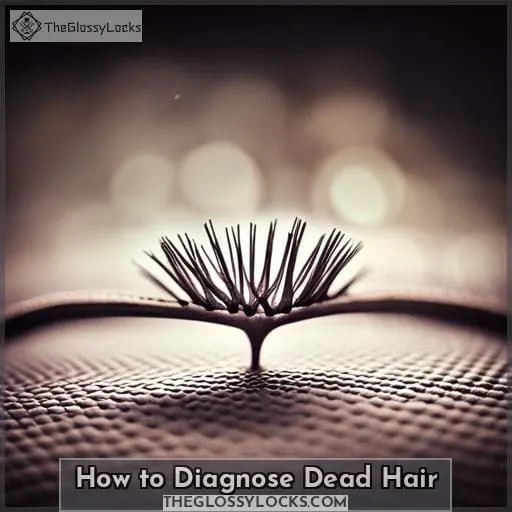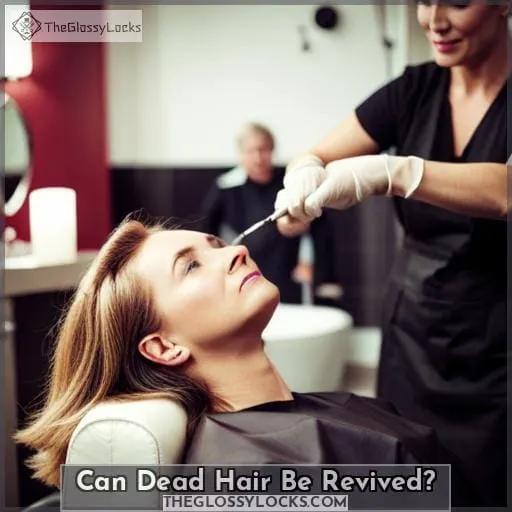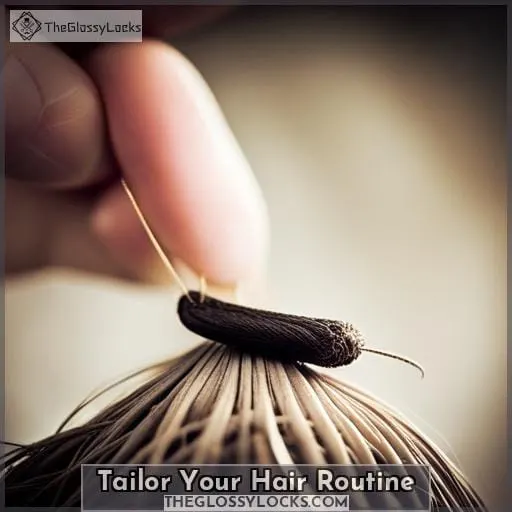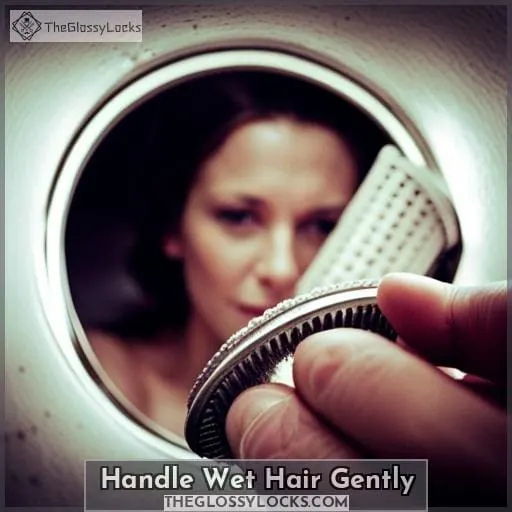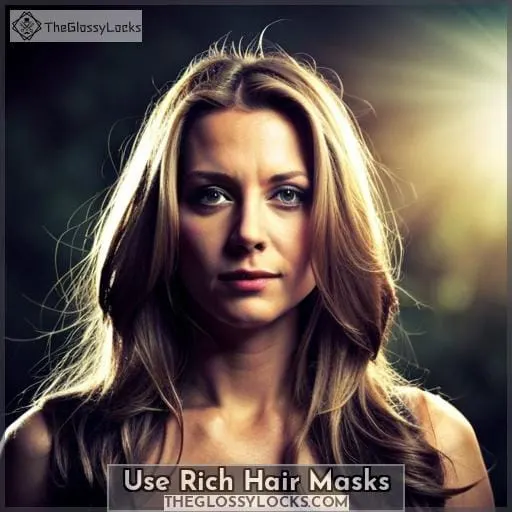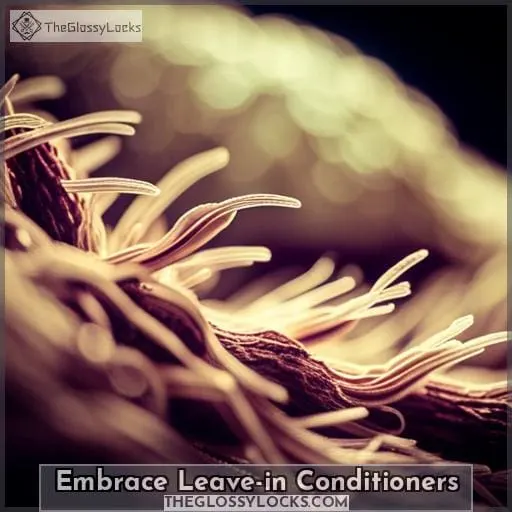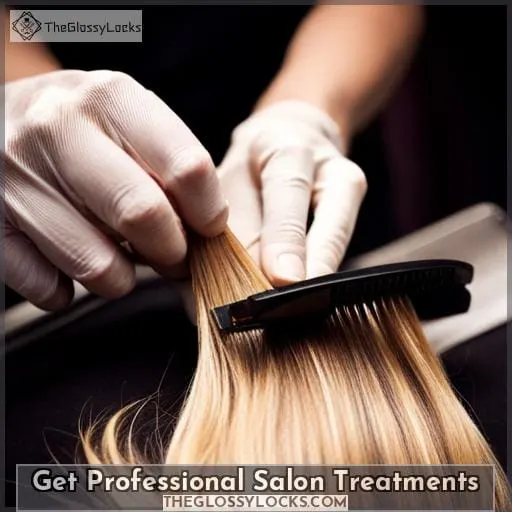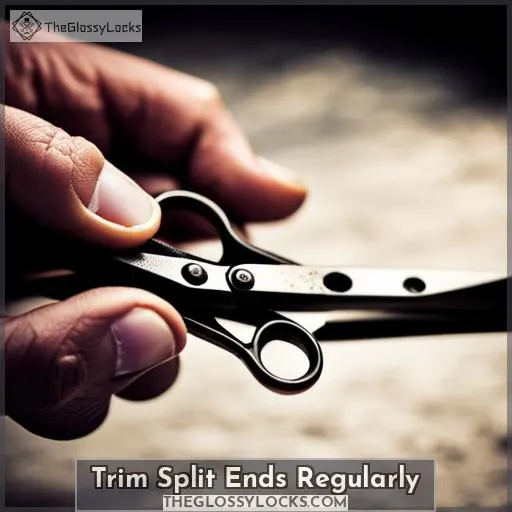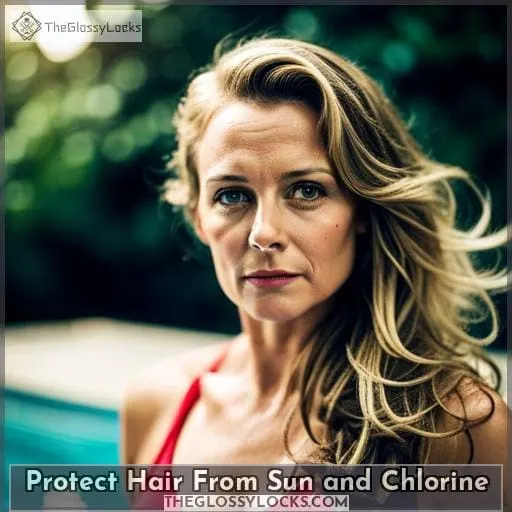This site is supported by our readers. We may earn a commission, at no cost to you, if you purchase through links.
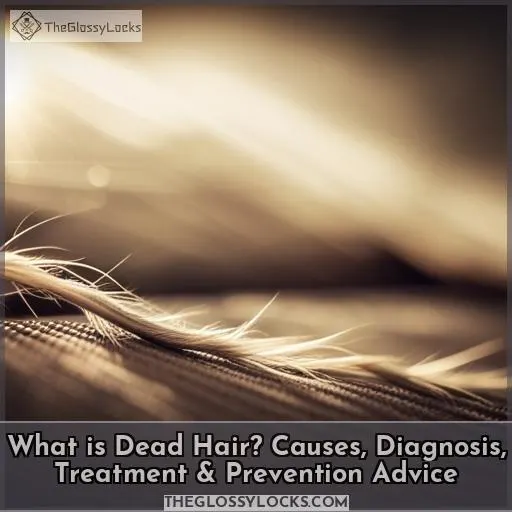 Contrary to popular belief, all hair is dead, but that doesn’t mean it can’t be revived. Learn how to identify and treat dead hair, plus get tips on how to prevent it from happening in the first place.
Contrary to popular belief, all hair is dead, but that doesn’t mean it can’t be revived. Learn how to identify and treat dead hair, plus get tips on how to prevent it from happening in the first place.
Table Of Contents
- Key Takeaways
- What Causes Dead Hair?
- How to Diagnose Dead Hair
- Can Dead Hair Be Revived?
- Tailor Your Hair Routine
- Handle Wet Hair Gently
- Use Rich Hair Masks
- Embrace Leave-in Conditioners
- Get Professional Salon Treatments
- Trim Split Ends Regularly
- Protect Hair From Sun and Chlorine
- Frequently Asked Questions (FAQs)
- Conclusion
Key Takeaways
- Heat damage, chemical damage, and hard water damage can cause damaged hair.
- Damaged hair is dry, brittle, dull, breaks easily, and has split ends.
- To revive damaged hair, tailor your hair routine, handle wet hair gently, get professional salon treatments, trim split ends regularly, and protect hair from sun and chlorine.
- If your hair is damaged beyond repair, you may need to cut it short.
What Causes Dead Hair?
There are three main causes of dead hair:
- Heat damage
- Chemical damage
- Hard water damage
Heat damage occurs when you use hot tools on your hair too often.
Chemical damage happens when you use harsh chemicals on your hair, like bleach or dye.
Hard water damage occurs when you rinse your hair with water that has a high mineral content.
Heat Damage
Overdone heat styling is one of the most common causes of dead hair.
To prevent it, use a heat protectant, avoid hot tools, air dry hair, trim split ends, and deep condition hair regularly.
Chemical Damage
Too many chemical treatments can also cause dead hair, so avoid permanent dyes and bleach, opt for less harsh alternatives.
Embrace your natural hair type by avoiding straightening and perms when possible.
Allow a two-week gap between chemical treatments to minimize damage.
Hydrate chemically treated hair with deep conditioners and masks.
Use specialized hair products to maintain color and curl without excessive damage.
Hard Water Damage
If you have hard water, it can cause damage to your hair.
The minerals in hard water can build up on your hair, making it dry, brittle, and prone to breakage.
You can use a shower filter, hard water shampoo, and hard water conditioner to help reduce the damage.
How to Diagnose Dead Hair
You often experience signs of dead hair, including frizz, dullness, dryness, breakage, and split ends.
Here are some additional signs that your hair is damaged:
- It feels dry and brittle.
- It’s difficult to style.
- It has a dull, lifeless appearance.
- It’s prone to breakage.
If you’re experiencing any of these symptoms, it’s likely that your hair is dead.
Can Dead Hair Be Revived?
Can dead hair be revived? Fortunately, the answer is yes. With the right hair care routine, you can revive dead hair and prevent further damage. A tailored hair care routine can help you achieve long-term hair health and shine.
Here are some tips for reviving dead hair:
- Use a gentle shampoo and conditioner that won’t strip your hair of its natural oils.
- Avoid heat styling and chemical treatments as much as possible.
- Deep condition your hair regularly to add moisture and nutrients.
- Use a leave-in conditioner to help protect your hair from the elements.
- Trim split ends regularly to prevent further damage.
By following these tips, you can revive your dead hair and achieve a healthy, lustrous mane.
Tailor Your Hair Routine
To revive dead hair, you need to tailor your hair routine with:
- Custom shampoo and conditioner
- Leave-in conditioners
- Hair serums
- Weekly hair masks
These products will help to hydrate, nourish, and protect your hair, leaving it looking and feeling its best.
Custom Shampoo and Conditioner
Pairing the right shampoo and conditioner is key to reviving dead hair.
Look for sulfate and paraben-free options that will provide:
- Moisture
- Shine
- Detangling
- Heat protection
Leave-in Conditioners
Dab on a leave-in conditioner to enhance moisture with a lightweight formula. This lightweight hair product can be used on dry or wet hair to improve the appearance of your hair shaft and reduce frizz.
Hair Serums
Use a silicone-based hair serum to lock in moisture. Enjoy benefits like:
- Seal in moisture
- Reduce frizz
- Increase shine
- Improve detangling
- Protect hair from heat styling
Weekly Hair Masks
Apply a hair mask at least once a week to revive dead hair and improve overall hair health.
Deep condition your strands for optimal results.
Incorporate protein-rich masks into your routine, adjusting the frequency based on your specific needs.
Handle Wet Hair Gently
When wet, it’s important to handle your hair gently to prevent damage and breakage.
Wet hair is more vulnerable and prone to breakage compared to dry hair because the water weakens the protein bonds in the strands.
To avoid combing wet hair, use a wide-toothed comb instead of a brush as it will cause less friction and reduce the risk of snapping or pulling on your strands.
Additionally, refrain from wringing out wet hair forcefully as this can also lead to damage.
Instead, gently squeeze out excess water using your hands or pat dry with a microfiber towel which is gentler on the strands.
If possible, allow your hair to air dry naturally rather than using heat styling tools which can further weaken these delicate bonds in wet hair care routine.
Use Rich Hair Masks
Nourish your dead hair with rich hair masks to bring back its vitality and shine.
Hair masks are a powerful tool in your haircare arsenal, providing intensive treatment to repair and restore damaged strands.
When choosing a hair mask, look for formulas that contain nourishing ingredients like proteins, vitamins, and natural oils.
These ingredients help replenish moisture, strengthen the hair shafts, and seal in hydration.
Deep conditioning regularly with a high-quality mask can help revive dryness caused by heat damage or harsh chemicals while promoting healthier-looking locks overall.
To maximize the benefits of your mask treatment, use it after shampooing and leave it on for the recommended time before rinsing thoroughly.
Incorporating this step into your routine will give you softer, smoother strands that are less prone to breakage.
Embrace Leave-in Conditioners
Dab on a leave-in conditioner to enhance moisture with lightweight hydration. Look for ingredients like argan oil, jojoba oil, almond oil, and coconut oil. Explore usage guidelines for optimal application. Use leave-in conditioners to address specific damage levels beyond basic conditioning.
Benefits of leave-in conditioners:
- Reduce frizz
- Increase shine
- Improve detangling
- Protect hair from heat styling
Get Professional Salon Treatments
In addition to your at-home hair care routine, consider getting professional salon treatments to help revive your dead hair.
Here are some tips for finding a good salon:
- Read online reviews.
- Ask for product recommendations.
- Book an appointment.
Here are some of the professional hair treatments that can help revive dead hair:
- Deep conditioning treatments
- Protein treatments
- Olaplex treatments
Trim Split Ends Regularly
Regularly trimming split ends can help prevent further damage and promote healthy hair growth.
- Avoid heat styling and harsh chemicals.
- Use gentle shampoo and conditioner.
- Trim your hair every 10 to 12 weeks.
Protect Hair From Sun and Chlorine
In addition to trimming split ends, you can protect your hair from sun and chlorine damage by:
- Wearing a hat or covering your hair when swimming.
- Using UV protectants and chlorine-resistant shampoos and conditioners.
Avoiding these harsh elements will help keep your hair healthy and strong.
Frequently Asked Questions (FAQs)
What is the difference between dead hair and damaged hair?
All hair on your body is dead, but damaged hair is hair that has been compromised by:
- Heat styling
- Chemical treatments
- Other environmental factors
Is it possible to revive dead hair?
You can’t revive dead hair, but you can restore its health and appearance with a tailored hair care routine.
What are the best ways to care for dead hair?
To care for dead hair, you should:
- Use a sulfate-free shampoo and conditioner.
- Apply a leave-in conditioner.
- Seal in moisture with a hair serum.
- Deep condition your hair at least once a week.
What are the signs that your hair is dead?
Signs that your hair is dead include:
- Dullness
- Dryness
- Frizz
- Breakage
- Split ends
To revive dead hair, you can:
- Use a deep conditioning hair mask
- Trim split ends
- Avoid heat styling
What are the long-term effects of having dead hair?
Dead hair can lead to a number of long-term effects, including:
- Split ends
- Frizz
- Dullness
- Breakage
It can also make your hair more difficult to style and manage.
If you’re experiencing any of these symptoms, it’s important to take steps to revive your hair and prevent further damage.
Conclusion
Now that you know what dead hair is, how to identify it, and how to treat it, you can take steps to revive your hair and keep it looking its best.


